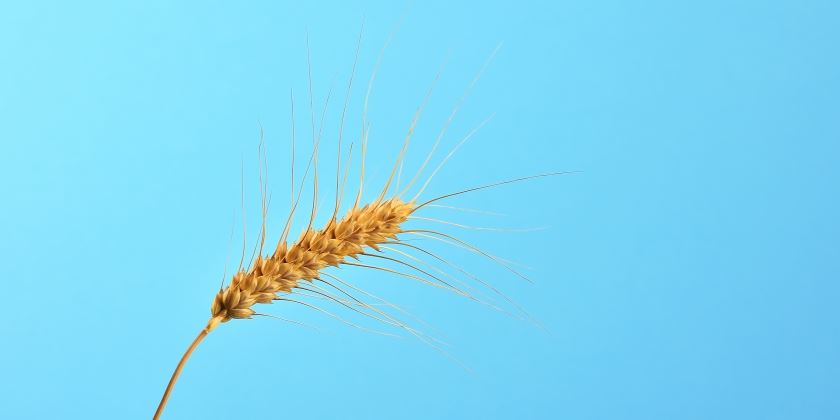Wheat-free diet: Practical tips

A wheat-free diet may seem daunting at first, but with expert guidance and practical tips the individual with wheat allergy can choose a balanced and varied diet.
Wheat is a ubiquitous staple and a common ingredient used within food manufacturing due to its food-technological properties. A wheat-free diet should only be initiated after a definite diagnosis has been made. The type and extent of the wheat allergy should be fully investigated as this will impact any future reintroduction plans. The majority of gluten-free foods are also wheat-free, however some specialist gluten-free products contain gluten free wheat starch (codex wheat starch) and as such, may not be suitable. Careful label reading is an essential skill for individuals following a wheat-free diet. In addition to avoiding wheat, less widely used wheat derivatives must also be avoided, including spelt, green spelt (unripe spelt), einkorn, emmer and kamut.
The following foods may contain wheat
- Rolls, bread, crackers and other baked goods
- Pasta, noodles
- Biscuits, cakes and pastries
- Granola and Muesli
- Bulgur, couscous
- Soup, thickened sauces and gravies
- Confectionery
- Breaded/battered meat and fish
- Beer, lager, stout and ale
- Packaged convenience foods
- Pizza bases
Practical tips for living wheat-free
A few simple tips will help patients to successfully implement a wheat-free regime:
1. Choose naturally wheat-free foods
There are many naturally wheat-free foods such as fruits, vegetables, meat, fish and poultry. Additionally there are many wheat-free grains and grain based products that may be used instead. The use of whole ancient grains, such as quinoa, millet, buckwheat etc will help replace the B vitamins and minerals usually found in wheat based products.
2. Careful Label Reading
It is important to carefully read the label of prepared and packaged foods. Any food containing wheat must declare this on the label in accordance with EU food labelling legislation [1]. All allergens must be clearly labelled in bold/italics or highlighted text within the ingredients list. Wheat is a common ingredient often added to manufactured and processed foods as a thickener or flavour enhancer. Specialist gluten-free products such as breads, pasta, crackers and cereals may be used (provided that are free of gluten-free wheat starch).
3. Dining Out
When dining out, patients should identify naturally wheat-free foods on menus, including plain grilled meat, fish, poultry, prepared with no marinades, sauces, or gravies. Vegetables and potatoes without sauce can be included. Suitable beverages may include fruit juices, coffee, tea, wine, cider and distilled alcohol.
1. Choose naturally wheat-free foods
There are many naturally wheat-free foods such as fruits, vegetables, meat, fish and poultry. Additionally there are many wheat-free grains and grain based products that may be used instead. The use of whole ancient grains, such as quinoa, millet, buckwheat etc will help replace the B vitamins and minerals usually found in wheat based products.
2. Careful Label Reading
It is important to carefully read the label of prepared and packaged foods. Any food containing wheat must declare this on the label in accordance with EU food labelling legislation [1]. All allergens must be clearly labelled in bold/italics or highlighted text within the ingredients list. Wheat is a common ingredient often added to manufactured and processed foods as a thickener or flavour enhancer. Specialist gluten-free products such as breads, pasta, crackers and cereals may be used (provided that are free of gluten-free wheat starch).
3. Dining Out
When dining out, patients should identify naturally wheat-free foods on menus, including plain grilled meat, fish, poultry, prepared with no marinades, sauces, or gravies. Vegetables and potatoes without sauce can be included. Suitable beverages may include fruit juices, coffee, tea, wine, cider and distilled alcohol.
4. Cooking and baking at home
There are many nutritious wheat-free grains and mixes that can be used to make favourite dishes.
Wheat free substitutes:
Wheat free substitutes:
| Food Group | Suitable substitutes for a wheat-free diet |
|---|---|
| Cereals | Oats, barley, rye, sorghum (millet), rice, corn as flour or starch |
| Pseudocereals | Quinoa, amaranth buckwheat |
| Starchy tubers | Tapioca, potato starch |
| Legumes | Soy flour (full-fat), carob gum, guar gum |
| Other | Chicory, chestnut flour |
It is important to remember wheat-free is not the same as gluten-free
A gluten-free diet for individuals with coeliac disease or non coeliac gluten sensitivity must eliminate barley and rye in addition to wheat from their diet. Some gluten-free products may contain certified gluten-free wheat starch.
References
- EU Regulation 1169/2011 on the provision of food information to consumers
www.drschaer-institute.com
